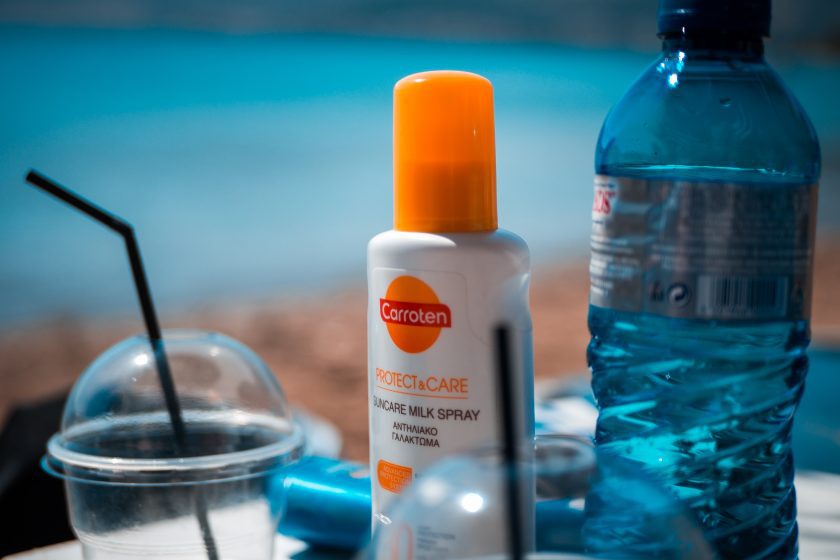Affiliate Disclosure: This post may contain affiliate links. This means we may earn a commission if you make a purchase through these links. This is at no extra cost to you. We only recommend products and services we truly believe in. Your support helps us keep the site running! Thank you.
No product on the market is labeled ‘sunscreen for hypermobile skin’, so how do you know what you should be putting on your delicate skin?
Hypermobile skin tends to be stretchy, prone to injury, and translucent, so does it need a special sunscreen?
Read on to find out more about sun protection for hypermobile skin and to discover the best products on the market.
Do you need to use sunscreen on hypermobile skin?
Sunscreen should be used on all types of skin. But you must apply it to hypermobile skin as it burns easier. The thin, translucent nature of hypermobile skin means it’s less protected from the sun, so sunscreen should always be applied.
When to use sunscreen on hypermobile skin
You should put sunscreen on your hypermobile skin all year round. Most people think that their skin is only at risk from the sun on hot summer days. But this isn’t true. You can get sunburned in the winter on dark, cold, gloomy days too.
One study found that applying facial sunscreen with SPF 30, visibly reduced the signs of photoaging. Improvements noticed in the study included:
- Better skin clarity
- Enhanced skin texture
- Reduced mottled appearance
- Pigmentation improvements
Naturally, the sunscreen prevented further sun damage from occurring on the face as well.

What factor sunscreen is best for hypermobile skin?
The higher the SPF of the sunscreen the better it is for your skin and the more protected you’ll be from the sun’s rays.
You’ll see from the below table that there are typically four SPF and UVB levels to choose from when shopping for sunscreen.
| SPF Level | Protection Against UVB Rays | Approximate Filtering Percentage of UVB Rays |
| SPF 15 | Moderate protection | 93% |
| SPF 30 | High protection | 97% |
| SPF 50 | Very high protection | 98% |
| SPF 50+ | Extremely high protection | 99%+ |
The Skin Cancer Foundation recommends using sunscreen with a minimum SPF of 30. I always use one that has an SPF of 50 as I have very pale skin, burn easily, and want to protect my skin as much as I can.

What’s the difference between SPF and UVB?
Sun Protection Factor (SPF) and Ultraviolet B (UVB) are two different measures of protection from the sun’s harmful rays.
SPF stands for Sun Protection Factor. It is a measure of how well a sunscreen protects the skin from UVB rays. SPF is measured on a scale of 2 to 100.
UVB rays are a type of ultraviolet radiation that comes from the sun. They cause sunburn, premature skin aging, and skin cancer. UVB rays are most intense between 10 am and 4 pm, so it is important to wear sunscreen during these hours.
What’s the best sunscreen for hypermobile skin
The best sunscreen for hypermobile skin is a broad-spectrum sunscreen. This is because it protects the skin from both UVB and UVA rays. UVA rays are the main cause of premature skin aging and wrinkles. They also put you at risk of skin cancer.
Which sunscreen is better: UVA or UVB?
Both UVA and UVB sunscreens are important for protecting your skin from the sun’s harmful rays. UVA rays cause premature visible aging, while UVB rays cause sunburn and skin cancer. This is why you need a broad-spectrum sunscreen rather than one that just offers UVA or UVB protection.
What to consider when buying sunscreen for hypermobile skin?
So, now you know that hypermobile skin needs a broad-spectrum sunscreen, here’s what else to consider when shopping around:
High Sun Protection Factor (SPF)
Hypermobile skin is more susceptible to sunburn and damage. So, it’s crucial to choose a sunscreen with a high Sun Protection Factor (SPF) rating. Look for a broad-spectrum sunscreen with an SPF of 30 or higher to provide effective protection against both UVA and UVB rays.
Physical or Mineral Sunscreen
Consider using a physical or mineral sunscreen instead of a chemical sunscreen. Physical sunscreens contain active mineral ingredients like titanium dioxide or zinc oxide, which work by reflecting and scattering the sun’s rays away from the skin. These ingredients are generally better tolerated by hypermobile skin and are less likely to cause irritation or adverse reactions.

Gentle and Hypoallergenic Formulation
Opt for a sunscreen specifically formulated for sensitive skin types. Look for key terms such as “gentle,” “hypoallergenic,” “non-irritating,” or “fragrance-free” on the product label. These formulations are less likely to trigger irritation or allergic reactions, making them suitable for hypermobile skin.
Moisturizing Properties
Hypermobile skin tends to be drier and more prone to moisture loss. Choose a sunscreen that contains moisturizing ingredients like hyaluronic acid, glycerin, or ceramides. These ingredients help hydrate and nourish the skin while providing sun protection, reducing the risk of dryness and discomfort.
Water-Resistant
Hypermobility can cause excessive sweating, so a water-resistant sunscreen is recommended. Similarly, if you’ll be spending time in the pool, water-resistance sunscreen is the way to go. This sunscreen should be able to withstand perspiration and water exposure for a longer duration. Look for a sunscreen labeled “water-resistant” or “very water-resistant” and follow the recommended reapplication guidelines.

Dermatologist Recommendation
Consulting with a dermatologist who specializes in hypermobile skin conditions can provide valuable insights and recommendations for choosing the right sunscreen. They can evaluate your specific skin needs and suggest suitable products that align with your skin’s requirements.
Buying sunscreen for hypermobile skin is a simple task when you know how. Follow these tips and you can be sure that your skin will be well-protected in the sun this summer.

